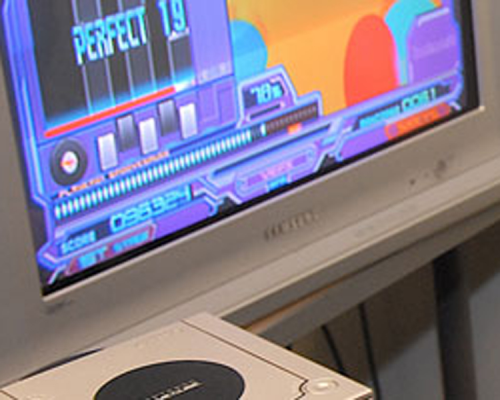May 13, 2008
DePaul Launches Degree Programs In Animation
From movies to video games to thousands of Web sites – from the corporate to the creative – the demand for computer animators is skyrocketing. Indeed, the most recent figures available from the U.S. Department of Labor’s Bureau of Labor Statistics indicate that jobs in the multimedia artist and animator field are expected to increase by more than 47 percent during the next eight years.
This employment trend, along with rising student demand, are major reasons why DePaul University recently launched two degree programs in animation through its College of Computing and Digital Media’s School of Cinema & Interactive Media (CIM).
Since January, students have had the option to major in two undergraduate programs in animation at DePaul, one a bachelor of arts, the other a bachelor of science. This spring, nearly 40 students have declared majors in animation, and approximately 60 animation majors are expected to enroll by this fall. More than 500 students are currently enrolled in the 25 different animation courses offered this quarter.
That’s quite a long way from the program’s humble beginnings of two courses just three short years ago. Scott Roberts, associate professor and one of the program’s lead faculty members, noted that CIM’s unique digital arts areas of study lend themselves well to skills taught in the animation programs.
“We’re really in an ideal situation, since our digital cinema, computer game development and interactive media programs are all fields that have a strong need for animation,” he said. “So when we originally started offering animation courses, they filled up quickly.”
The bachelor of arts degree in animation is a broad-based exploration of different animation techniques including 3-D, hand-drawn, stop-motion and Flash animation skills for the Web, as well as imparting a basic art foundation and a sensibility for the moving image. The program also offers electives in experimental animation methods. The bachelor of science degree contains many of the same foundational components, but is more intensely focused on 3-D computer animation and modeling. The bachelor of science degree is also a part of DePaul’s Game Dev, a team-based multidisciplinary approach to game development, where students work side-by-side with game programmers and designers in project-based courses. While previous animation experience is helpful, there are no art or technology prerequisites to apply to either of the programs.
“Students can start from the ground up here,” Roberts noted.
According to Roberts, Chicago’s location as a hub for the video game and commercial production industries, both reliant on animators for success, will offer numerous career opportunities for graduates of the programs. This is evidenced by the fact that ten members of the local animation industry are already serving as instructors for animation courses at the university.In the past, animation classes often have been housed under computer graphics programs in college and university catalogs. However, Roberts explained that animation is actually a distinct field from computer graphics, able to stand on its own.
“Computer graphics is mainly about programming, and building the software, systems and infrastructure that allow animation to work,” he said. “Animation is creating the digital art and making the computer models. It’s the creative end of the process.”
The School of Cinema & Interactive Media is part of DePaul’s innovative College of Computing and Digital Media (CDM). With 3,079 students enrolled in its undergraduate and graduate programs, CDM is one of the largest colleges of its kind in the nation. The university has invested more than $1.3 million during the past two years alone in state-of-the-art labs, facilities and specialized equipment for the college. For more information on the animation degree programs, visit www.cim.depaul.edu or GameDev.depaul.edu.

